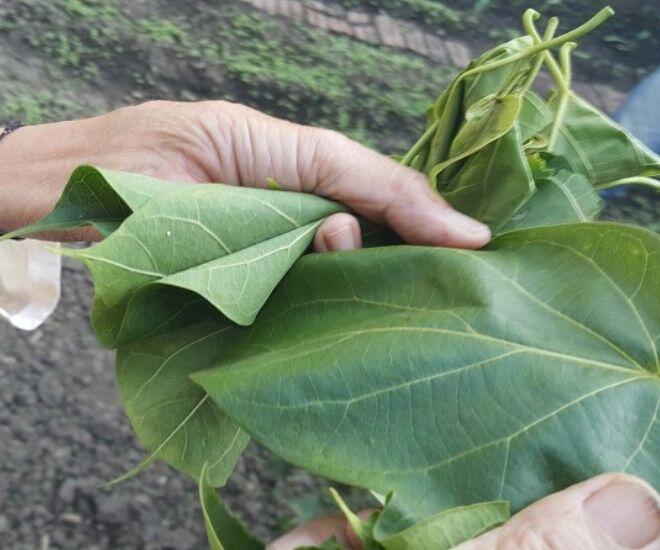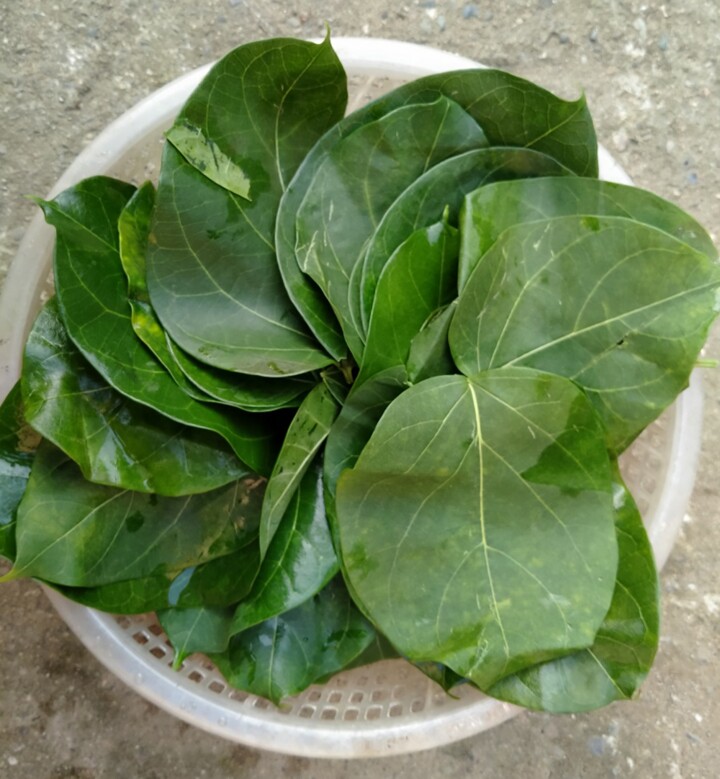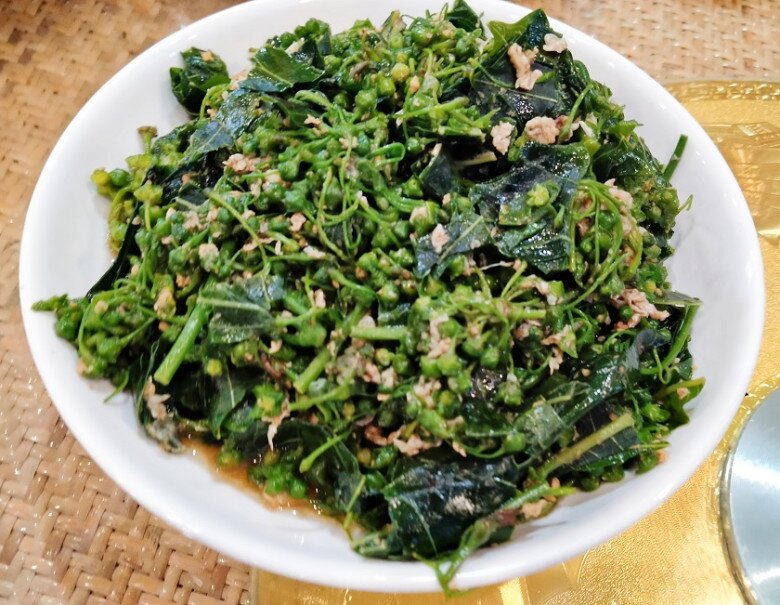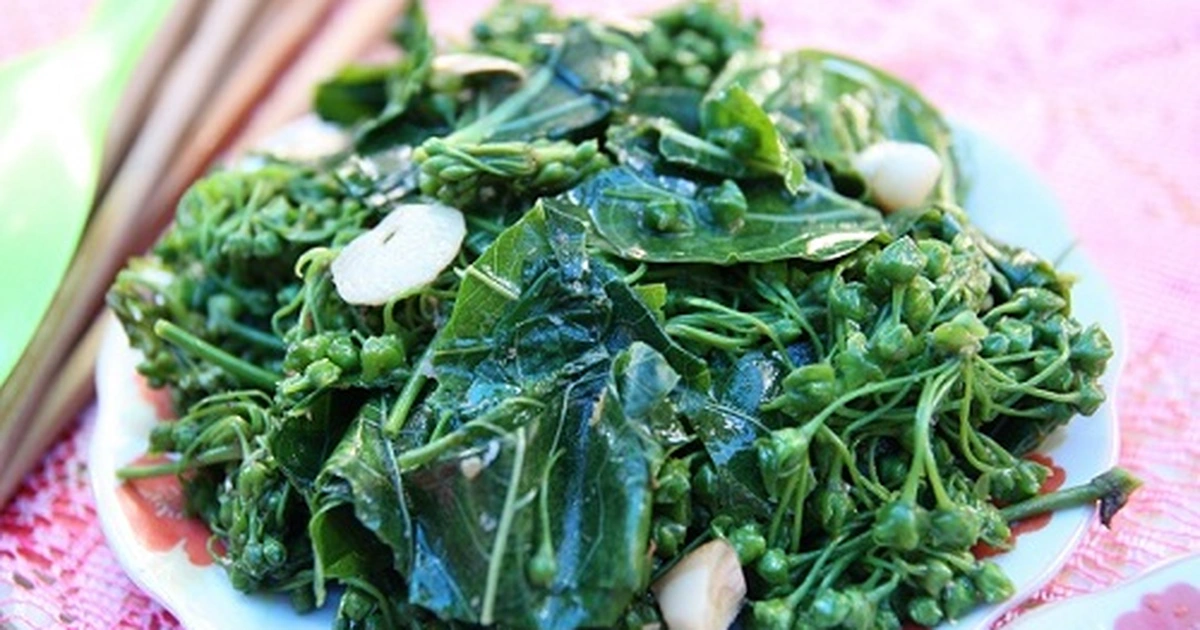
In contrast to the majority of the country, where the Cerbera odollum tree is considered a deadly hazard, the people of Mường So take pride in a unique, edible variety of this plant—a discovery passed down through countless generations. This particular strain of Cerbera odollum, distinct from the commonly known toxic variety often referred to as “finger grass” or “gut-pulling medicine”, exhibits marked differences in appearance, growth characteristics, and even flowering season.
According to the elders, their ancestors stumbled upon this distinct variety in the forest and, captivated by its exquisite flavor, began incorporating it into their cuisine. Over time, recognizing its culinary value, they brought it home to cultivate in their gardens, thus integrating it into their daily meals. This practice stands in stark opposition to the toxic variety, which can induce death with just 2-3 leaves, as its poison rapidly permeates the body.

Discerning between the toxic and non-toxic varieties of Cerbera odollum demands subtlety and experience. While both are vines, the toxic variant has elongated, spear-shaped leaves, whereas the non-toxic type found in Mường So boasts rounder, shorter, and larger leaves, akin to the size of a palm. Another crucial distinction lies in their flowering cycles: the toxic variety typically blooms with yellow flowers from June to October, whereas the edible species flowers during the Tet holiday season, coinciding with significant festivals celebrated by the White Thai people.
Thanks to these clear identifiers, the people of Mường So confidently utilize this plant, incorporating it into a variety of traditional dishes, whether boiled, in soups, or stir-fried. They make use of not only the leaves but also the flowers, adding diversity to their family meals.

The Mường So variety of Cerbera odollum leaves has a distinctive flavor profile, offering a combination of bitterness and sweetness. The simplest preparation methods are boiling or making soup, allowing diners to fully appreciate the leaves’ natural sweetness and refreshing taste. However, the dish that has truly made these leaves famous is the stir-fried variety, prepared with garlic. To make this dish, the leaves are first washed, then torn into smaller pieces and briefly rubbed to soften them before being quickly stir-fried in a hot pan with fragrant, sauteed garlic. This dish is incredibly aromatic, with shiny, verdant leaves that evoke a sense of familiarity akin to forest vegetables, yet it also possesses a unique, refined character.
In addition to garlic, these leaves can be creatively combined with other ingredients such as eggs or water buffalo meat, enhancing the dish’s richness and nutritional value. For the White Thai people, these leaves are not merely a daily food but also symbolize prosperity and sophistication. During festivals and especially during the Kin Lẩu Khẩu Mẩu food festival, a celebration unique to the White Thai people of Mường So, dishes featuring these leaves are indispensable on the ceremonial trays, expressing gratitude to the gods and ancestors for abundant harvests. This festival also serves as a platform to showcase and honor the distinctive cuisine of the White Thai people, blending these leaves with indigenous spices such as Zanthoxylum armatum and Amomum tsao-ko.
The significance of these leaves extends beyond the culinary realm. Locals also share anecdotes about their medicinal benefits, such as stir-frying them with male papaya flowers to support liver health. This plant produces leaves year-round, with an abundance of flowers in the spring, and is always in high demand at local markets. Its use in wrapping sour meat and as a delicacy for guests on special occasions further underscores its preeminent position in the region’s culinary culture.

For many visitors to Mường So, being offered a dish featuring “finger leaves” can initially induce apprehension or even terror, as the toxic reputation of this plant is deeply ingrained in their psyche. However, a single taste is often all it takes to astonish guests with the strange, unique, and utterly non-toxic flavor profile of this delicacy. The combination of subtle sweetness, mild bitterness, and distinctive aroma creates an unforgettable culinary experience.
Although this edible variety of Cerbera odollum lacks a precise scientific name, it has become an integral part of Mường So’s cultural identity. Visitors eager to sample this distinctive delicacy should seek guidance from experienced locals to ensure they select the right variety and prepare it safely, thus fully appreciating its exquisite flavor. More than just a culinary delight, these leaves embody the ingenuity, creativity, and folk wisdom of the ethnic groups of Northwest Vietnam in their harmonious interaction with nature.































